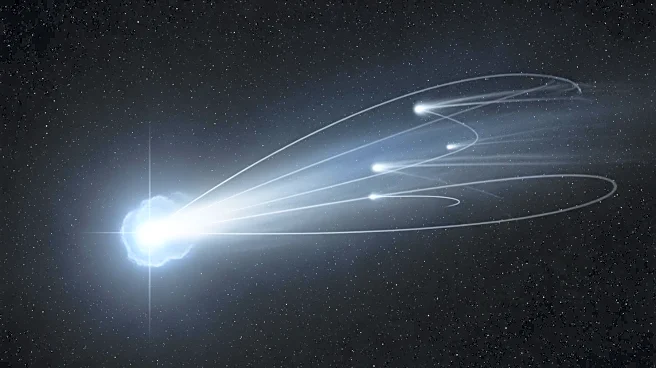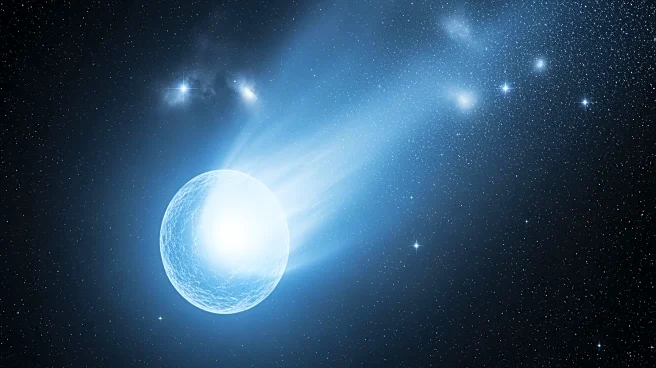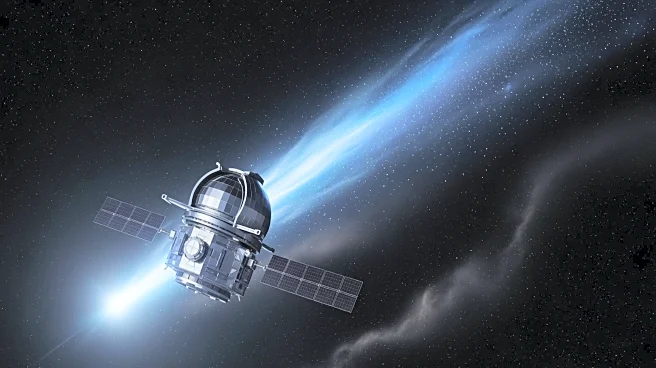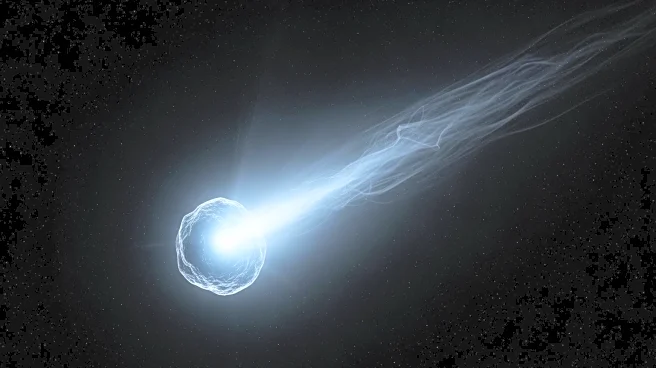What's Happening?
NASA's James Webb Space Telescope (JWST) has captured a mid-infrared image of a unique triple star system known as Apep, which includes two Wolf-Rayet stars. These stars are massive and extremely hot,
living a life bordering on instability. The system is characterized by spiraling dust shells, resembling a cosmic embryo. Apep's stars revolve around each other on a 190-year orbit, with their stellar winds colliding to produce dense, carbon-rich dust that forms a spiral shape. This discovery provides a rare glimpse into the dynamics of such star systems, with JWST's image revealing nested spirals representing close approaches over the past 700 years.
Why It's Important?
The discovery of Apep's unique triple star system is significant for astrophysics, as it offers insights into the behavior and evolution of Wolf-Rayet stars. These stars are rare, with only about 1,000 known in the Milky Way. Understanding their interactions and the formation of dust spirals can shed light on the processes leading to supernovae and gamma-ray bursts. The data from JWST enhances our knowledge of stellar dynamics and the lifecycle of massive stars, contributing to the broader understanding of cosmic phenomena and the potential for new discoveries in star formation and death.
What's Next?
Further analysis of Apep's system will continue, with astronomers using JWST data alongside observations from other telescopes to refine models of stellar interactions. The study of Apep may lead to new theories about the formation of dust spirals and the conditions necessary for Wolf-Rayet stars to exist in binary systems. As the stars in Apep are destined to explode as supernovae, ongoing research will focus on predicting these events and understanding their impact on the surrounding cosmic environment.











